Fictional Warwickshire
‘A human life, I think, should be well rooted in some spot of a native land.’
Daniel Deronda by George Eliot
Many elements of Eliot’s novels were based on real people, places and events. Some of them can be linked to her time living in Nuneaton, Coventry and Warwickshire.
Scenes of Clerical Life, 1857
Eliot’s first book consists of three short stories. One is ‘Janet’s Repentance’. It is set in Milby, a fictional version of Nuneaton. The plot follows Janet Dempster and her religious and personal concerns. Her husband Robert is a lawyer. When Janet leaves her abusive husband, she is taken in by her neighbour, Mrs Pettifer. Lawyer Dempster and Mrs Pettifer were inspired by John Buchanan and Mrs Robinson. Both lived in Church Street in Nuneaton.
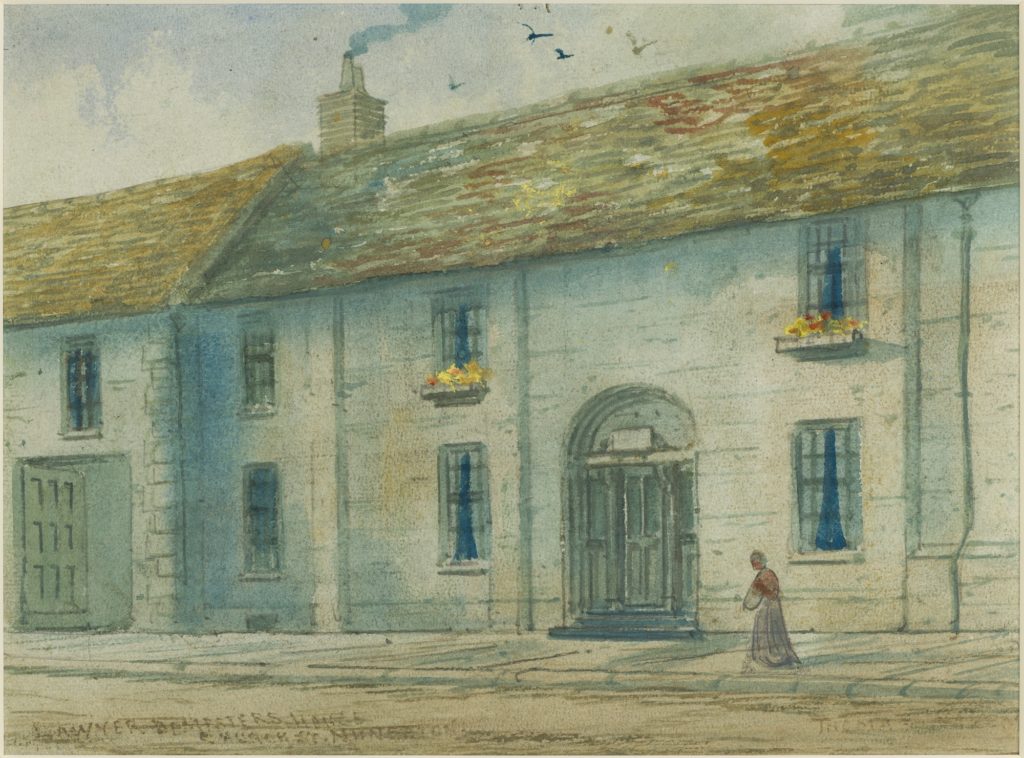
Nuneaton Museum & Art Gallery
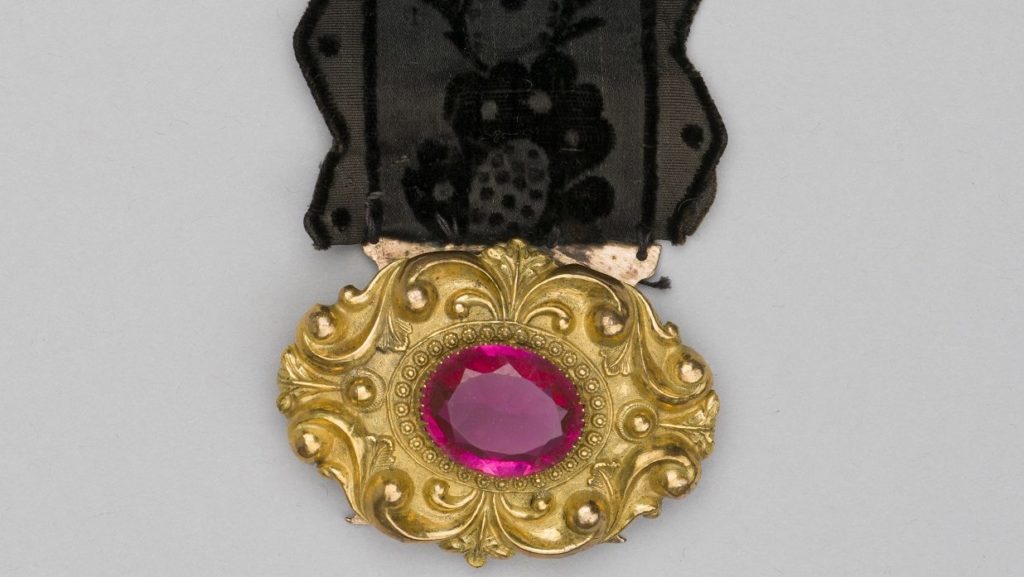
Nuneaton Museum & Art Gallery
Adam Bede, 1859
Eliot’s first novel features Dinah Morris, a travelling preacher. She is based on Eliot’s aunt: Elizabeth Evans, a Methodist preacher in Derbyshire. The novel’s famous trial scene takes place in a room based on St Mary’s Guildhall.
“Grim dusty armour hung in high relief in front of the dark oaken gallery at the farther end, and… opposite was spread a curtain of old tapestry.”
Adam Bede
The Mill on the Floss, 1860
This could be seen as the most autobiographical of Eliot’s novels. Dorlcote Mill is based on her childhood home of Griff House of which she had fond memories.
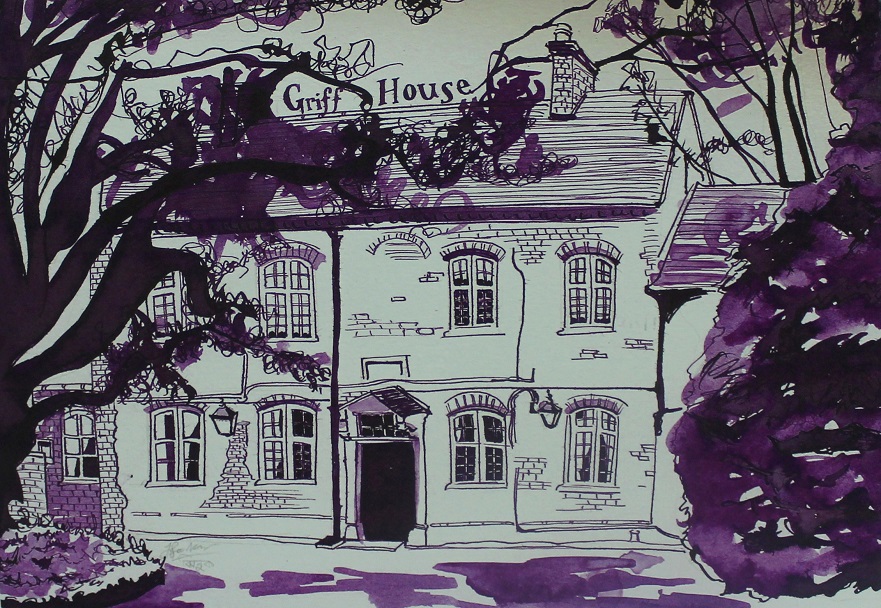
‘Dear old Griff still smiles at me which is more like than unlike its former self, and I seem to feel the air through the attic above the drawing room, from which, when a little girl, I often looked towards the distant view of Coton College.’
Letter by George Eliot
Print of Griff House by Jhinuk Sarkar, Nuneaton Museum & Art Gallery
Both the house and attic are described in the novel.
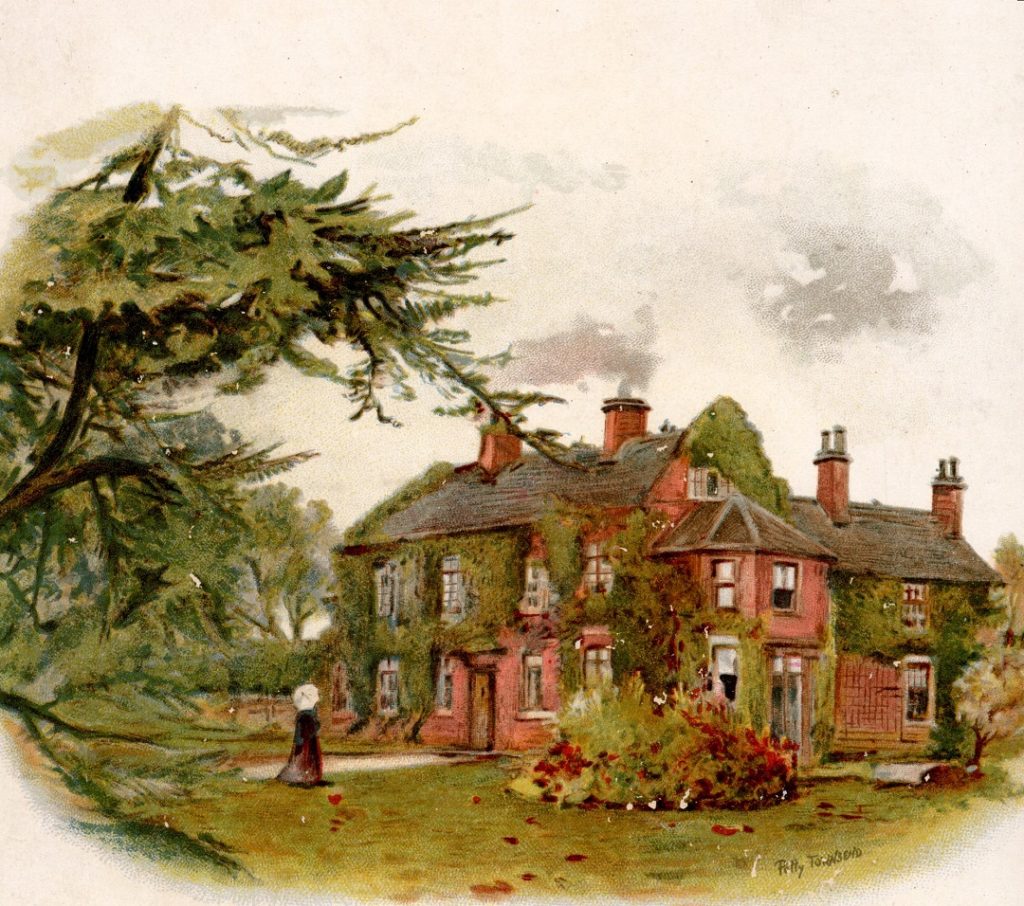
This attic was ‘Maggie’s favourite retreat on a wet day, …; here she fretted out all her ill-humours, and talked aloud to the worm-eaten floors and the worm-eaten shelves, and the dark rafters festooned with cobwebs.’
The Mill on the Floss
Griff House illustrated by Patty Townsend in George Eliot, her early home.
In the novel, the relationship between brother and sister, Maggie and Tom, reflects Eliot’s relationship with her own brother Isaac. Other characters are said to be based on Eliot’s family who lived nearby. Mr Richard Johnson was married to Eliot’s aunt Elizabeth. Together they were the inspiration for Uncle and Aunt Pullet.
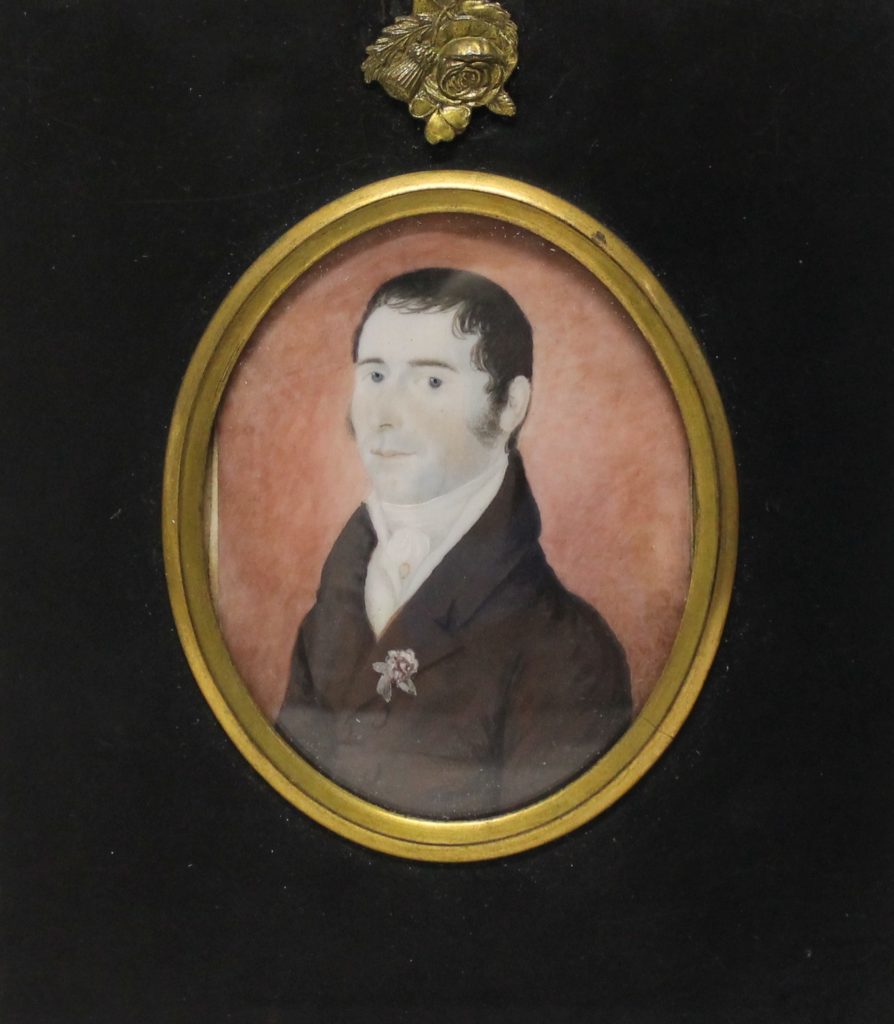
Mr Pullet is described as ‘a small man with a high nose, small twinkling eyes, and thin lips, in a fresh-looking suit of black and white cravat, that seemed to have been tied very tight.’
The Mill on the Floss
Miniature of Richard Johnson, Nuneaton Museum & Art Gallery
Silas Marner, 1861
Silas Marner is a weaver who makes linen on a handloom. Eliot would have been familiar with the workings of handlooms and the lives of weavers. Weaving was a common trade in north Warwickshire and Coventry was famous for silk ribbon weaving.
‘The livelong day he sat in his loom, his ear filled with its monotony, his eyes bent close down on the slow growth of sameness in the brownish web, his muscles moving with such even repetition that their pause seemed almost as much a constraint as the holding of his breath.’
Silas Marner
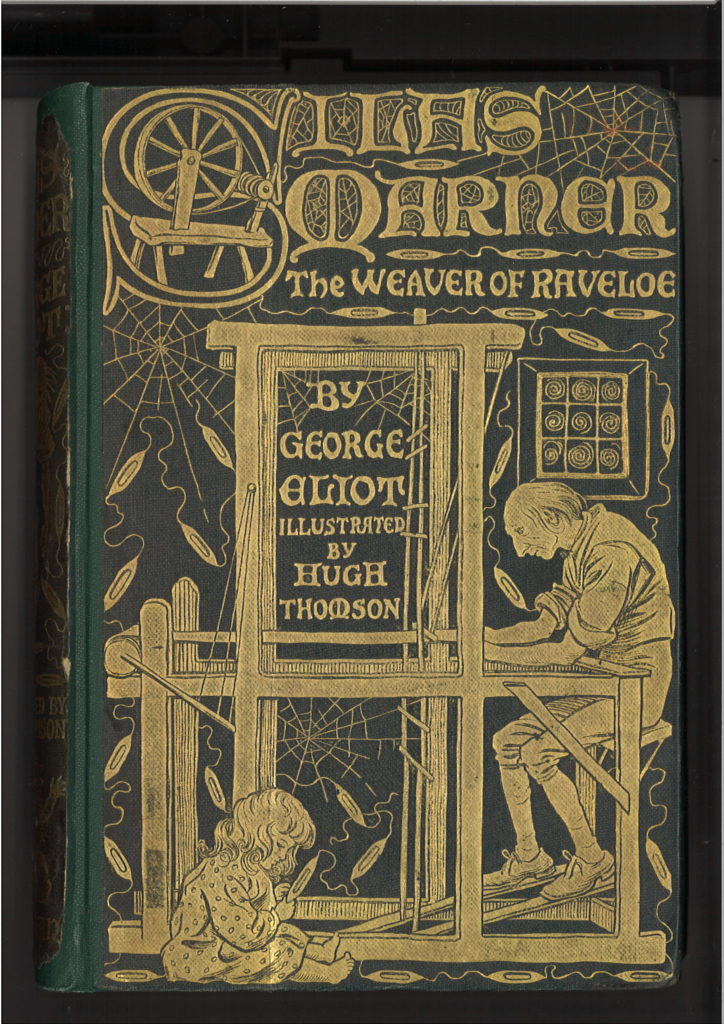

Middlemarch, 1871-1872
The town of Middlemarch is based on Coventry. One of the characters, Walter Vincy, is similar to Eliot’s Foleshill neighbour, Abijah Pears. Both made their wealth from ribbon weaving and served as mayors for their respective towns.
